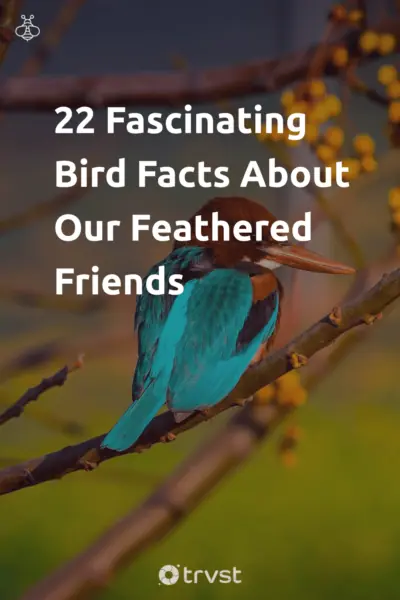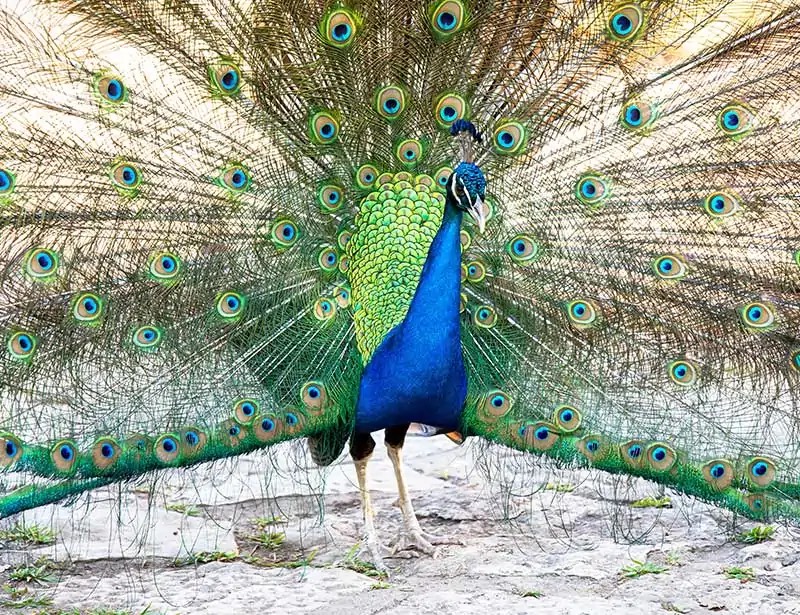
Birds are some of the most captivating creatures in the world. They are covered in feathers and come in remarkable colors. From the hummingbird to the perching birds, we have over 18,000 species of birds all over the planet. Many birds fly, while some can jump, run, and swim. Some of them are also quite bizarre.
What would our world look like without birds? Well, we will definitely miss the experience of seeing them beautify the sky on a bright day.
What else do we know about these creatures called birds? Read on to discover 22 intriguing facts about birds that we have curated.
Related: For more bird inspiration, check out what other people have to say about our fine feathered friends in our compilation of the best bird quotes.
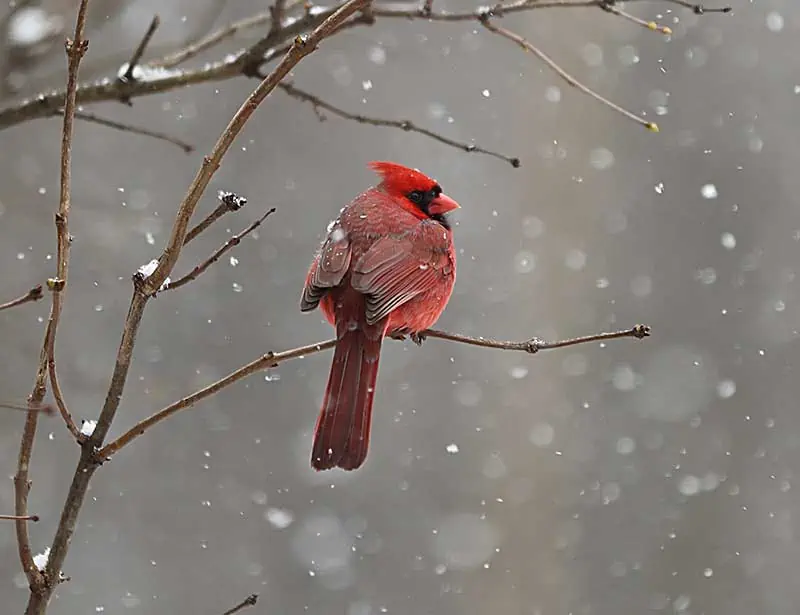
There are numerous bird species all over the world. Typically, many scientists estimate the number of bird species to be about over 10,000. However, according to new research, there are about 18,
In the UK, the British Ornithologists Union (BOU) estimates that there are 628 species of birds. In the US, there are 1120 different species of birds.
Studies from National Geographic revealed that . The most common bird species are the perching birds or “passerines,” which are known for the unique configuration of their feet. They have three toes pointing to the front and one toe to the back. This allows them to perch on various slender structures like branches, wires, feeders, and so on. They are also known for their unique vocals. Perching birds tend to burst into songs.
There are other common bird species like Columbiformes (doves and pigeons), Cuculiformes (cuckoo birds), and many other species.
Read more: Type of Birds.
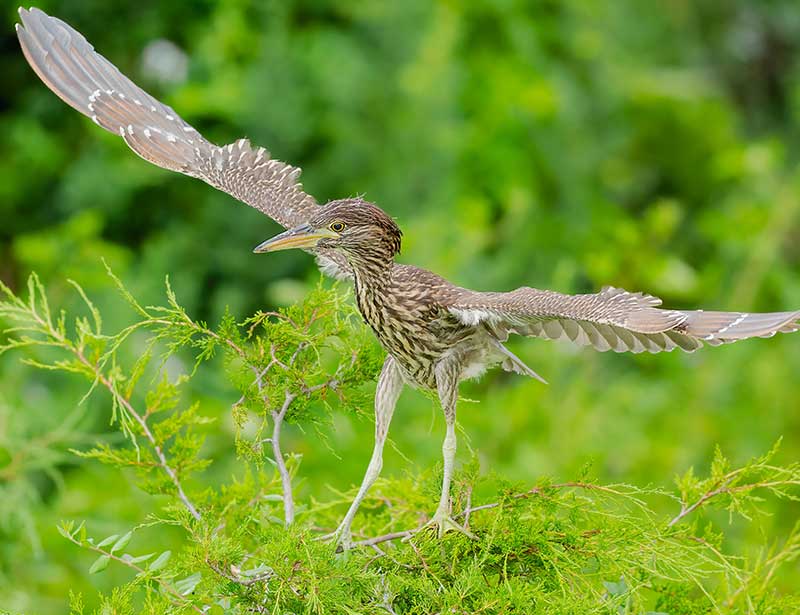
Birds are warm-blooded vertebrate animals that lay eggs. One feature that distinguishes birds from other animals is their feathers. While most birds fly, others, like penguins and ostriches, are flightless birds. However, all birds have feathers, and only birds have feathers. Despite having feathers, the world’s only bird without wings is the Kiwi, native to New Zealand.
Primarily, birds use their feathers for flight. They have muscles at the base of each feather to aid motion as they fly. Feathers also regulate their temperature and help them attract a mate. Did you know that their feathers are also water-resistant? This helps to keep them dry in the rain or water.
Whether or not a female bird has a mate, they can all lay eggs. For example, chickens with red earlobes lay brown eggs. There is a genetic link between the red ear lobes and the color of the eggs. The Araucana and Ameraucana chicken species lay green or blue eggs.
The smallest bird egg comes from the hummingbird. Female birds generally increase their reproductive activity depending on the environmental changes to prepare for egg-laying and taking care of their chicks. After laying their eggs, the baby birds mature and hatch out of the shells. Birds create nests to incubate their eggs and take care of their chicks.
With thousands of bird species, birds are the only creatures that we can find in every continent of the globe across South America, North America, Africa, and so on. Birds can occupy different environments. They also migrate from one habitat to another as the season changes to find food or seek shelter for their young.

A group of birds is called a flock. Birds in a flock belong to the same species and move together in a coordinated fashion. Flocking has various benefits for different species. It helps to protect most species against predators. Flocking helps them stay alert, as they can all look in different directions. A predator could become distracted or confused when they see a flock swirling around, making it difficult to target one prey.
For other species like the geese, flocking provides additional benefits. The V formation of the geese helps them reduce flying energy. When a bird in front flaps its wings, the bird at the back benefits from it, feeling the impact of the air. This is useful when a bird is injured or smaller in size.
You can find the peregrine falcon on every continent but Antarctica. They live in wide-open spaces and can be found everywhere, including deserts. .
The tale of the disappearance of dinosaurs is an interesting and mysterious one. However, what they left behind is even more interesting. Birds evolved from a group of dinosaurs called Theropods. This group is the same one that the famous Tyrannosaurus rex belonged to.
The earliest known bird is the Archaeopteryx which lived around 150 million years ago in the Jurassic period. They looked like small feathered dinosaurs. They even had teeth. However, scientists believe these birds lost all their teeth and evolved beaks.

Birds like parrots can mimic human speech. The African Gray Parrot is the most talkative bird and also one of the most intelligent birds. One parrot could mimic hundreds of words thanks to its significant mental capacity. .
Oddly, ravens in the wild can mimic the sounds of their predators to attract them to carcasses they are unable to break open. Some ravens can also mimic human speech and sounds from their environment. These birds surpass other birds’ intelligence, having the mental and emotional capacity of a 5-year-old human child.
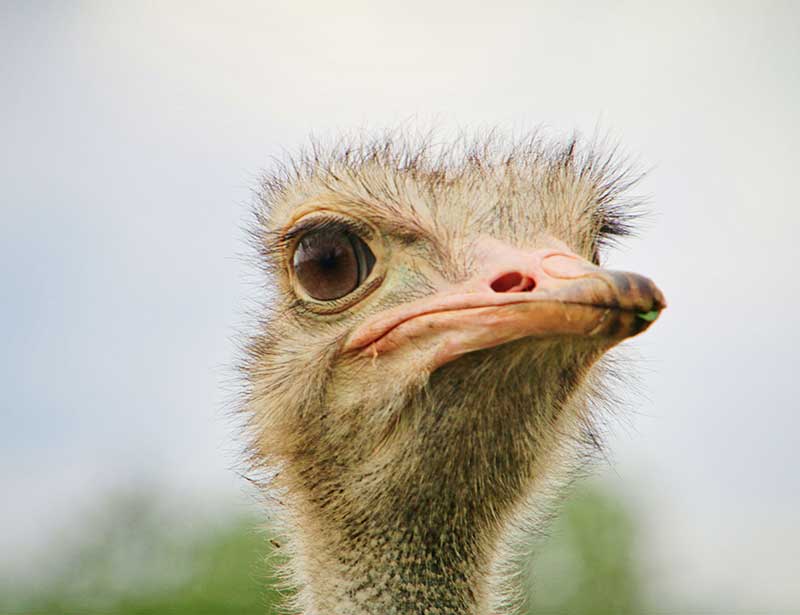
When an ostrich looks at you, it is difficult to avoid making eye contact. The Ostrich has the largest eyes of any animal that lives on land. The bird’s eyes are bigger than its brain and five times bigger than the eyes of humans.
The ostrich is the biggest bird in the world. This flightless bird is famous for its long neck and remarkable running prowess. Their large eyes and powerful legs help them run away from predators in the wild. The Ostrich, the world’s largest bird, also lays the world’s largest bird egg. The largest eggs can weigh as much as 2.5kg.
Ducks have a single-brain sleeping pattern; half of their brain sleeps while the other half stays awake and active. When ducks sleep in a group, the ducks on the outer rim sleep with one eye open and alert for predators within their vicinity.
Mallard ducks display a more erratic sleeping behavior. They sleep with one eye open and one leg on the water. They do this to conserve heat while they roost on water.
Related: 13 Interesting Duck Facts
The young hoatzin, also known as stink birds, have two claws on their wings. They use these claws to climb tree branches and pull themselves out of the water. They also use their claws to hide from danger. When faced with a threat, the young hoatzin jumps from its nest and into the water. They then use their claws to get themselves on land. Once the coast is clear, they climb to a tree branch with their claws.
Albatrosses are one the biggest seabirds, with the longest wingspan of most birds in the world. This bird can soar effortlessly in the sky for hours at a stretch without flapping them. They do this by harnessing wind energy under their wings. They can go hundreds of miles feeding on fish and squid. Interestingly, the young Albatross can spend years of their lives at sea without touching land.
Even more fascinating is that this bird can sleep while flying, however, only for a few seconds.

A penguin walks upright. They spend most of their time at sea and are fast swimmers. They are also the only birds that cannot fly. However, they are excellent jumpers. A penguin can jump as high as 9 feet from the sea and onto the shore. As they approach the water, penguins can sometimes jump to propel themselves into the water faster. They can also jump out of the water and on land by swimming super fast.
These beautiful creatures come in a black-and-white color that acts as camouflage. Thanks to the spines around their mouth, these creatures can also swallow many fish in one day, which guides the fish down their throat.
Related: Read up on baby penguins and some super cute photos!
You may not want to pick a fight with crows. Crows that belong to the raven family are incredibly intelligent birds. They can recognize the faces of humans and even navigate human environments. They even mourn the death of their family.
The peregrine falcon is the fastest bird, . However, these wild birds don’t make the top ten fastest on a level flight. The spine-tailed swift flies faster at over 100km per hour on level flight.
You will have, no doubt, heard the squeaking or whistling sounds of birds as you stroll through a park or natural environment. That is the sound of birds communicating with one another. Communication sounds include squeaks, singing, whistles, gurgles, warbles, trills, rattles, and many other bird sounds in the bird world.
Some birds also communicate using non-vocal methods. You may see a bird beating the air with its wings essentially to establish a territory. The Wilson’s snipe bird spreads its special tail feathers as it takes a downward dive. It beats its wings, gathering air within its feathers to create a winnowing sound. The snipe does this during courtship.
Sounds are also not the only way birds communicate. They also communicate with visual displays. For blackbirds, the male birds puff up their feathers and show off their colorful shoulders. Female birds select their mate based on how colorful or attractive the male bird appears.
So why do birds communicate? Birds communicate to establish territory, find food to eat, call on their mate, signal the presence of danger, and other reasons.
Did you know that the bird that can say the most human words is the African Grey Parrot? Researchers have found it can learn as many as 800 words
Birds use energy at high levels and have high metabolic rates. However, passerines possess a higher metabolic rate than non-passerines.
One indicator of metabolic rates is the heart rate. The hummingbird can have a heartbeat that measures up to 1260 beats per minute when it’s in full flight. The bee hummingbird, which is the smallest bird in the world, has the highest metabolic rate.
Although birds evolved from dinosaurs that had teeth, birds do not have teeth. They have ridges that help them grip their food. Most birds do not hunt for prey and so do not need teeth. Birds that eat insects, like worms and ants, and small animals use their beaks to grab and swallow their meal.
So, how do birds eat? They swallow food whole. A muscular organ in their stomach called the gizzard grounds the food for digestion.

A pair of birds can take longer in courtship than the act of copulation. In the bird world, courtship behavior starts from claiming territory and wooing a prospective mate using visuals and auditory displays like dances, songs, and spectacular flights. Male birds show off their health and strength to a female bird, trying to convince her that he is the best mate.
Once the female bird accepts the invitation, mating takes place. The male bird takes a position on top of the female bird. The female then exposes her cloaca for easy penetration. This takes only a few seconds. The birds may mate several times during their mating period. This could take a week or more.
Bird species like kiwis, ostriches, ducks, swans, and geese do not have a cloaca but have a penis instead. After mating, the birds stay around to nest and grow their young.
Read more: How do Birds Mate?
Birds like crows and ravens love to play. Ravens also point their beaks at other birds to grab their attention. They stick with family and friends and also play with other ravens, humans, and other animal species. They express various emotions, from happiness to surprise and even rage. They mate for life and live together in pairs.
Birds act as pollinators, transferring seeds and nutrients as they fly from one region to another. They also play a significant role in agricultural production. They eat unwanted pests on livestock and crops, which helps prevent crop depletion and pest outbreaks.

Bird poop plays a major role in spreading nutrients. Seabirds, in particular, contribute to this. After spending months eating food like fish and insects, they find land to nest in hundreds and even thousands of colonies. When full, these birds poop on the shores, concentrating nutrients at their breeding grounds.
21. Birds are a large part of human history
Birds have a close relationship with humans. Their eggs are an important human food source. For example, humans consume brown eggs from chickens with red earlobes. Also, the first bird that was domesticated by humans was the geese. Human beings also use bird feathers to adorn hats, caps, pens, and other items. Birds are also popular pets for people all over the world.
Birds are also an integral part of ancient art and outdoor entertainment. Many people go on birdwatching as a major recreational activity.
Birds are going extinct at an increasing rate. Different studies reveal that bird losses are even more rampant in tropical areas due to alterations in their habitat. Since 1500, researchers claim that around 154 bird species have gone extinct. In the last quarter of the 20th century, .
Environmental changes and catastrophes like fire, storms, and disease have also caused background extinctions.
Bird extinctions could have far-reaching consequences, including the extinction of plants, the spread of disease, and the loss of pest control. There would also be no long-distance seed dispersal, limiting food production and medicine.
To reduce this, we can support bird conservation programs by making donations. We can also protect bird habitats and follow proper birding ethics.
From the smallest hummingbird to the heaviest bird, birds are easily one of the most interesting animals in the world. They are intelligent and simply fascinating to watch. They make wonderful pets.
With all the wonderful facts about birds, it is clear that seeing them go extinct will be tragic. Thankfully, we can do our part by supporting bird conservation programs and playing our part to protect the habitats birds require to survive.
Pin Me:
